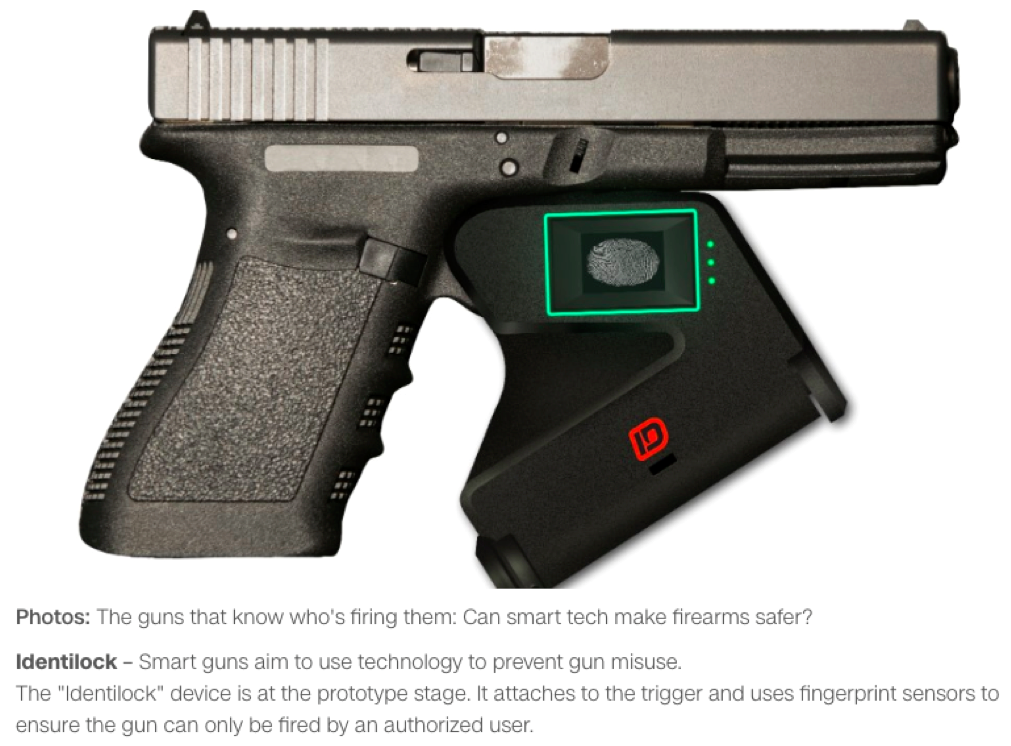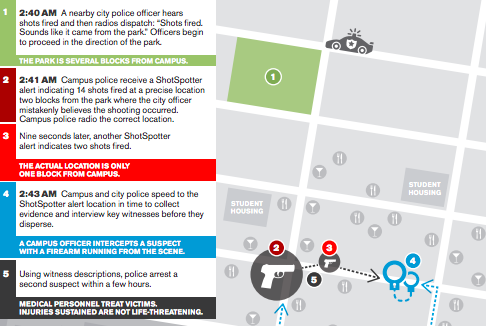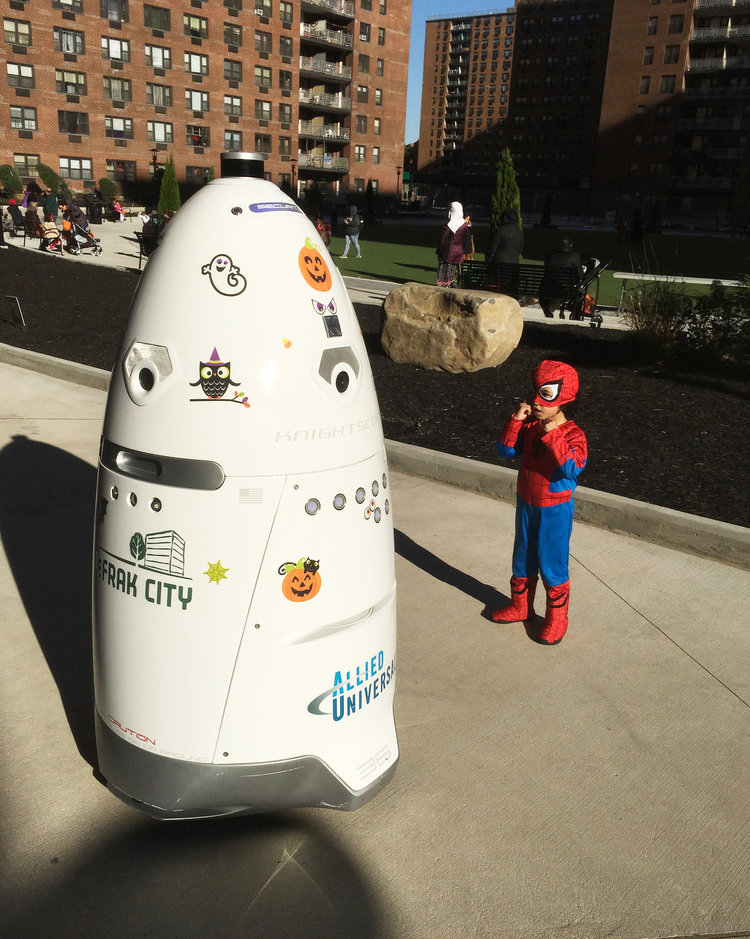Pardon the departure from robotics, but I feel it necessary to raise awareness of a very human problem. For the past decade, I have heard paranoid pundits demure the advances of automation with dystopian fears of killing machines. Yet, those same so-called spokespersons for humanity do nothing about a very low-tech problem – guns. Now, Washington, in its great brilliance, is seriously considering providing teachers with firearms. Will someone just call Crazy Joe to beat some sense into these politicians and break their bullet (money) addiction? Until then, maybe it’s up to the technologists to innovate with new tools to protect America’s children from harm.
A recent study published in the journal of Pediatrics found that on average 5,790 children are shot annually in the United States, translating to 16 children hospitalized a day for gunshot wounds, and over 1,300 premature deaths a year. Almost a quarter of these incidents are accidental. According to Katherine Fowler for the Center of Disease Control and Prevention, and lead author of the study, “Firearm-related injuries contribute substantially each year to premature death, illness and disability of children. These injuries are preventable.”
Today, it is actually easier to fire a weapon than to unlock an iPhone. Utilizing biometrics, engineer and accidental gunshot victim Omer Kiyani developed Identilock a fingerprint authentication system for handguns. Kiyani explained his invention to CNN, “The main point of firearms ownership is home defense, and home defense means quick access. But the other side of that is accidents. I’m a gun victim, a gun owner, and I have children. I came up with something that fits my needs. I was working as a safety engineer for airbag calibration, and it didn’t make sense that there was something so simple that had such an impact on safety, but not for guns. In essence, this is a product of that question.”
Kiyani joins a handful of other innovators as part of Smart Tech Challenges Foundation that was created by Silicon Valley angel investor Ron Conway and serial entrepreneur Jim Pitkow in response to the Sandy Hook shootings in 2012. Smart Tech awarded one million dollars to 15 entrepreneurs in the hopes of preventing the next mass killing or accidental shooting. According to the Foundation’s website, more than two hundred and fifty thousand guns are stolen each year and never recovered. Smart gun technology, ranging from biosensors to radio frequency chips, could render these firearms unusable, drastically reducing the black market for illegal weapons.
Every year, 12 million guns are sold in the United States; driving $7 billion of legal sales, with Americans owning 300 million firearms that account for half of the global consumer weapons market. According to these statistics the average American gun household owns eight to nine firearms, with forty percent keeping a loaded weapon in their house in close proximity to children. A Philadelphia startup gun manufacturer is planning on embedding radio frequency ID technologies into its product to keep weapons out of the hands of children and criminals. LodeStar Firearms is aiming to save 10,000 lives a year by developing personalized guns for public safety officers and legal pistol owners. Lodestar is not without its critics, the National Rifle Association has been vocally calling such technology an overreach by government to curtail America’s personal freedoms. The NRA’s outcry has already led one gun manufacturer, German startup Armatix, to go out of business.
Last month, LodeStar founder Gareth Glaser did not sound discouraged in an interview with The Philadelphia Inquirer: “I did some research and found that, like auto accidents, safety with guns can be increased by technology like seat belts and air bags in cars. If our smartphones can recognize our fingerprints or our faces, why can’t guns?” Glaser’s view was further endorsed by LodeStar board member and safety advocate Michael Farrell, who thinks it will be just a matter of time when these views “will likely change, just as it has with Detroit and self-driving cars.” Farrell is the owner of Smart Firearms, a leading supplier of training weapons to police departments nationwide. As less than twenty percent of guns stolen from law enforcement agencies are recovered, Farrell’s existing customer base could be early adopters of LodeStar’s technology.
While smart gun technology could reduce accidental shootings and theft, it wouldn’t have prevented 19 year old Nikolas Cruz from massacring seventeen students at the Marjory Stoneman Douglas High School in Parkland, Florida. Cruz purchased his semi-automatic rifle legally, and an ID sensor couldn’t stop the bullets once triggered. However, Dr. William Tang of University California, Irvine told the The Atlantic last month that the technology to remotely shut off guns actually exists, it is just not being deployed by the gun industry. Tang described how existing cell phone transmitters with unique ID numbers and IoT tracking software on the number of rounds fired could enable authorities to shut off the firing system remotely, similar to Cloud-based IoT applications like Nest and Canary. Tang aptly points out the technological ability to halt mass shootings is within reach, unfortunately it is trailing behind public policy.
Another fatal lesson from the Parkland shooting was the school’s video feed was on a twenty minute delay, and thus provided authorities with unreliable information, even though AI enhanced surveillance is widespread throughout Florida. In addition to utilizing computer vision to actively identify shooters and locate their positioning, well-funded schools are now deploying a variety of sensor-fusion technologies to keep students safe. ShotSpotter, a leader in urban and campus gunshot detection, has created a new platform called SecureCampus to provide first responders with real-time information on gun violence. Its acoustical monitoring platform quickly verifies live shooting events to automatically dispatch security personnel the precise indoor and/or outdoor location, reducing response time from minutes to seconds. ShotSpotter’s system is completely integrated into existing surveillance systems and communications platforms. Already, its technology is being beta tested by the University of Maryland.
In addition to AI monitoring, tech companies are innovating with virtual command centers to remotely control buildings and isolate shooters. NetTalon is marketing a software solution to school systems to automatically put buildings on lockdown mode, complete with bulletproof glass and reinforced steel doors. NetTalon can be activated on site via teacher panic buttons or through existing surveillance installations connected to local police departments. According to the company, the platform even releases smoke to cloud the vision of the shooter and turns on the PA system to begin evacuations and negotiate a peaceful stand down. In explaining its $400,000 investment in NetTalon, Indiana Superintendent Dr. Paula Maurer said, “I think that Newtown, Sandy Hook, really made people understand, made us all understand this could happen to us. Now is the time to do something about it. We have some answers. We have the technology. We have ways to make our kids safer and we have to do it.”
In the wake of the massacre that led to the deaths of twenty students under the age of seven, inventors took it upon themselves to create solutions in place of responsible public policy. Leading robotic perimeter security company Knightscope was actually founded on the heels of the tragedy. In an emotional interview with R&D Magazine, the company’s founder, Stacy Stephens, shared, “This company was created as a direct result of the Sandy Hook shooting. After that event took place there were several law enforcement organizations that did studies on active shooter situations, and one of those to which I was privy, which really became the genesis of Knightscope, was that if we could have gotten officers into that school 60 seconds sooner, we could have saved as many as 12 lives. Being a father of three, an entrepreneur, and a former police officer, that resonated with me.” Since its founding, Knightscope has been distributed to malls, office parks and local police departments. Today, Stephens’ company competes with a handful of other security-bots, some that even take offensive action. In July 2016 the Dallas police department utilized a Northrop Grumman Remotec machine to neutralize (kill) an active shooter, and the Chinese are testing out Anbots in airports that are outfitted with tasers.
In the wake of public outcry, and stagnation on gun regulation, robots could very well be rolling into school systems nationwide. Of course, none of these technologies could replace sensible policy of banning the sale of military-grade firearms. In the words of Parkland survivor, teenager Florence Yared, “The right to bear arms … does not and never will overpower the individual’s right to life, liberty and the pursuit of happiness. We cannot protect our guns before we protect our children.”






